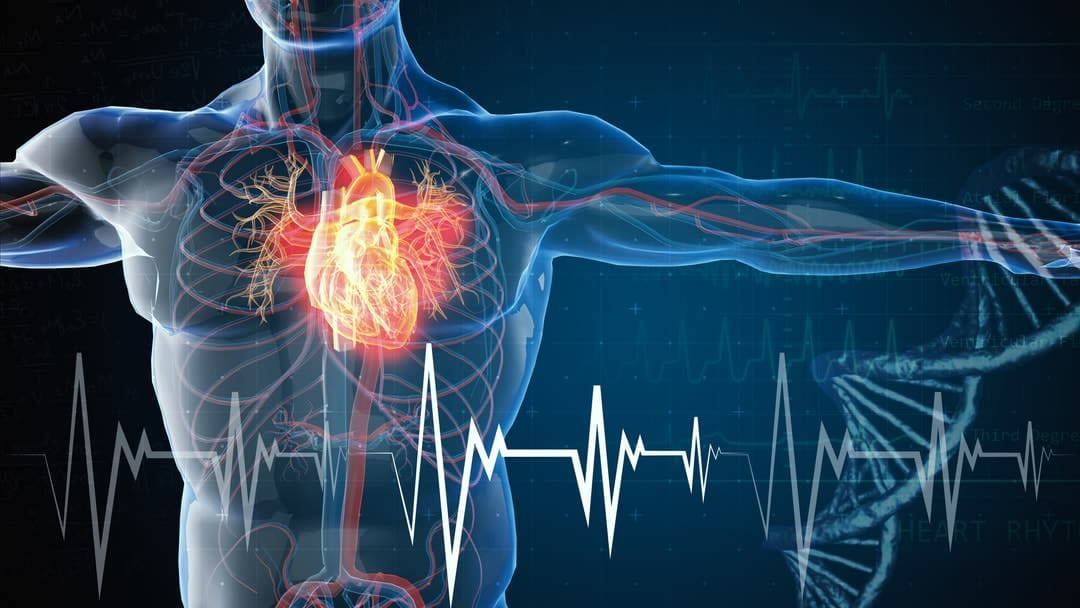
With all the attention still focused on the devastating COVID-19 pandemic – despite Australia slowly moving towards a new normal – heart disease remains the country’s leading cause of death. It kills one person every 12 minutes, and causes one in four deaths in Australia and beyond.
The heart beats without our active thought, which is why, perhaps, we take for granted the health of this rhythmic, ticking pump; our most vital organ.
With the launch now of Monash University’s Victorian Heart Institute (VHI), and the Victorian Heart Hospital (VHH) also opening on campus in 2022, the focus from the experts involved will be on this one-organ system, although from an expansive range of medical – and other – disciplines. When the under-construction hospital opens, the two new heart hubs will be housed in the same building, making it the centre of heart research, teaching and cardiac care in Australia. It will be the first and only dedicated heart hospital in the country.
Every year, 50,000 Australians will suffer a heart attack, killing 20 people a day, with one person dying every 12 minutes.
Professor Steve Nicholls, a world-renowned cardiologist originally from Adelaide, heads both. The work of the new institute is already underway, and is expected to break down barriers between research, teaching and clinical care.
“There is something incredibly exciting about the fact that biomedical research will be happening in the same building that we will treat patients,” Professor Nicholls says.
He's outlined what he calls the "five grand challenges" for the next decade of heart research, with the ambition of shifting the status quo in heart disease.
They are:
- new technologies
- personalised medicine
- women’s heart health
- under-serviced groups such as Aboriginal and Torres Strait Islanders, and those living in remote and rural Australia
- living well.
“Living well is understanding that we need to take a more holistic approach to treating heart health,” Professor Nicholls says.
“We need to consider diet, sleep, mindfulness and wellbeing, but also survivorship. People who survive other diseases like cancer now find themselves at a great risk of heart disease. How do we improve health, and the patient experience for them?”

Dr Emily Kotschet, a Monash cardiologist and electrophysiologist, is a specialist in the technology and "mechanical intervention" (pacemaker) side of the equation.
“Technology is best when you are advancing in terms of treatment, not just prevention,” she says.
“The advances right now are miniaturisation and digital technology for managing patients remotely – implantables that are remote-accessed, self-sufficient and patient driven. With the patients in more control than ever, their experience is continually improving.”
Technologically, “the old pacemaker was a big can on your shoulder with leads to the heart”, she says.
“The new ones are like AAA batteries that sit beside the heart. As we miniaturise for treatment, there will be way more engagement with patients to pick up their symptoms early and get on top of them early. Discussions with IT academics at Monash will bridge the gap between our method and the digital platforms that are emerging.”
Dr Kotschet also says women’s heart health has not had the media profile and reach that breast cancer has, so public awareness is low.
“I think breast cancer really got cancer into the spotlight 15 or 20 years ago with celebrities and endorsements, and they are now well-funded. Their [clinical] trials are travelling quite nicely. Now I think it’s time for heart disease – as a big killer – to find its spotlight.”
Collaboration is a priority
This ability to more freely collaborate across university disciplines on an ostensibly "medical" issue is a priority for the heart specialists and clinicians.
The head of the School of Public Health and Preventive Medicine, Professor Sophia Zoungas, is a leading expert in screening and managing cardiovascular disease. She likens the new institute and hospital to a forward-thinking company such as Google that, when presented with a problem, draws in the best minds available to help solve it.
“Despite the fact the institute and hospital have a physical location, it also provides a forum for virtual, broader work, bringing in areas across the University that may not be co-located,” she says.
“Whether that’s public health, engineering, science … hopefully it will also provide that core clinical training for clinicians and researchers in the one place. We will be able to track the best people, the best minds.”
She says COVID-19 has put heart disease further under the radar.
“People forget heart disease is still our biggest killer. We have all been a little distracted this year with the global pandemic – but even within the context of this pandemic, one of the most serious outcomes of it [for patients] has been the cardiovascular complications.”
Understanding the heart's 'building blocks'
For Professor Peter Currie, the head of Monash’s renowned Australian Regenerative Medicine Institute (ARMI), the future of heart health relies on scientists understanding the fundamental building blocks of the heart. Despite the heart being unable to repair itself (unlike other organs), and the fact that stem cells do not work, Professor Currie has an optimistic view of how regenerative medicine can create the heart disease solutions of the future. He sees this is as the challenge, and the new institute and hospital as the place to do it.
“I think the great opportunity is to cherry-pick interested and dedicated researchers who have an interest in this area of biology and medicine to work on these big problems.
“Everyone thinks cardiovascular disease has been hit on the head because we’ve got a few drugs,” he says, “but nothing could be further from the truth.”





